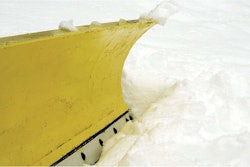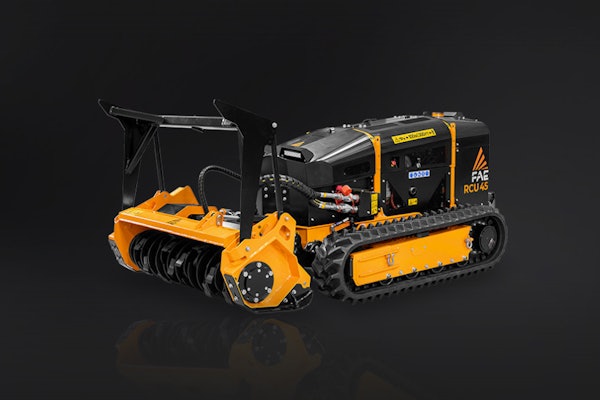Pickup trucks are the mainstay for the landscape and turf care industries, and rightly so.
But another type of truck is becoming increasingly popular among contractors, the low cab forward (LCF).
LCFs offer several features not available with pickups, starting with much greater cargo volume. And despite the increased cargo capacity, the short bumper-to-back-of-cab dimensions and tight-wheel cut (angle of steering) make LCFs easy to maneuver in urban settings.
Major players
Isuzu and Mitsubishi manufacture popular lines of LCFs, so we interviewed Brian Tabel, retail marketing manager of Isuzu Commercial Trucks of America, and Leighton Good, manager of product and applications with Mitsubishi Fuso Truck of America, to learn what distinguishes their trucks from others.
“If a contractor is driving less than 20,000 miles a year, the fuel savings of diesel may not offset the higher initial cost,” Tabel says.
Tabel emphasizes Isuzu’s drivetrain options. Engine choices include two inline, turbocharged, intercooled, four-cylinder diesels and a 6-liter V8 that can be configured for gasoline or CNG/LPG fuel. Standard transmissions across the line are six-speed automatics; six-speed manuals are optional on two of the diesel models.
Isuzu Low Cab Forward models are among the the top choices of landscapers.“While manual transmissions comprise only a small percentage of our sales,” Tabel says, “operators in hilly terrain appreciate the ability to hold a gear longer with a manual and the increased engine braking that manuals provide.”
Good points out Mitsubishi Fuso offers the only four-wheel-drive LCF, the Canter FG4X4. Four-wheel drive yields benefits anytime road conditions are not ideal, but Good says owners find their trucks especially well-suited for plowing snow. “It’s the perfect plow vehicle,” he says, “with excellent sight lines and maneuverability.”
A six-speed Duonic is the only transmission offered by Mitsubishi Fuso, which is an electronically controlled automated manual that operates just like an automatic. Yet, from an engineering perspective, the Duonic is different because it has dual clutches instead of a torque converter. The design reduces shift shock, improves efficiency and, therefore, fuel economy. It also has a PTO-drive gear, so mounting a hydraulic drive, such as those offered by Muncie Power Products and Parker Hannifin, is a straightforward task.
Know what you need
One of your first considerations as a potential buyer is crew size. Standard cabs seat two or three; crew cabs add three or four more seating positions. If you need the additional seating, the crew cab is the right choice. But crew cabs take up space that could be used for a bed or box. And while standard cabs tilt to provide engine access, crew cabs have panels that must be removed for that access.
Make a list of what you haul and what you’d like to haul. After-market companies have shelving, racks, ramps, tool boxes, compressors and a host of other products. You can have a body made to haul string trimmers, crushed stone, shrubs or some of each.
There are plenty of body options for LCF trucks, including dumps and stakeside flatbeds and even the ability to combine two body styles on one truck.
At least two companies specialize in upfitting bodies to LCF trucks for the landscape market – Super Lawn Trucks in Fort Valley, Georgia, (superlawntrucks.com) and Supreme Corporation, which has five regional sales offices in the United States. Both companies offer extensive menus of standard and optional equipment so buyers can configure their trucks to meet their needs.
Supreme Corporation has two standard models: The Vanscaper is a box van with rear and side doors, and the Landscaper is a flatbed with 15 1/2-foot sides. Both are beavertails with fold-down ramps.
Where you drive matters, too. Wheelbase and turning radius affect performance, especially in urban environments. Tabel cites the experience of a contractor in California who had been using a pickup truck with trailer to service accounts in outlying communities. By switching to a crew cab LCF, the contractor was able to carry enough workers and equipment to accomplish in one day what had taken two days with the pickup/trailer setup. As an unexpected benefit, the LCF could use high-occupancy vehicle lanes where the pickup and trailer could not.
Other trucks
Vans offer yet another alternative or complement to pickups.
The Ford Transit Connect provides 129.6 cubic feet of cargo capacity or 78.4 cubic feet with optional second-row seating. Its 2-liter inline four-cylinder engine delivers 136 horsepower and 128 pound-feet of torque to the front wheels through a four-speed automatic transmission.
Since being introduced in the United States in 2001, the Mercedes-Benz and Freightliner Sprinter van lineup has expanded to include a number of body styles including cargo and passenger vans, crew vans with second-row seating and a chassis cab. There are standard and high-roof models and two wheelbases (144 and 170 inches). A maximum cargo capacity of 547 cubic feet comes in the long-wheelbase, high-roof model. The only drive-train available is a V6 diesel engine producing 188 horsepower and 325 pound-feet of torque mated to a five-speed automatic transmission.
Nissan entered this market in the 2012 model year with the NV Series. There are three models reflecting three gross vehicle weight ratings — the NV1500, NV2500 and NV3500 — and two trim levels. The NV2500 and NV3500 come in standard- and high-roof versions; the NV1500 is standard-roof only. Cargo capacity is 234 cubic feet with the standard roof and 323 with the high roof.
Transmissions are five-speed automatics and include tow mode as part of an optional tow package. Engine choices are a V6 rated at 261 horsepower and a V8 rated at 317 horsepower.
~~By Richard Ries









